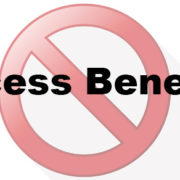If you acquire a company, your to-do list will be long, which means you can’t devote all of your time to the deal’s potential tax consequences. However, if you neglect tax issues during the negotiation process, the negative consequences can be serious. To improve the odds of a successful acquisition, it’s important to devote resources to tax planning before your deal closes.
Complacency can create costly tax consequences
During deal negotiations, you and the seller should discuss such issues as whether and how much each party can deduct their transaction costs and how much in local, state and federal tax obligations the parties will owe upon signing the deal. Often, deal structures (such as asset sales) that typically benefit buyers have negative tax consequences for sellers and vice versa. So it’s common for the parties to wrangle over taxes at this stage.
Just because you seem to have successfully resolved tax issues at the negotiation stage doesn’t mean you can become complacent. With adequate planning, you can spare your company from costly tax-related surprises after the transaction closes and you begin to integrate the acquired business. Tax management during integration can also help your company capture synergies more quickly and efficiently.
You may, for example, have based your purchase price on the assumption that you’ll achieve a certain percentage of cost reductions via postmerger synergies. However, if your taxation projections are flawed or you fail to follow through on earlier tax assumptions, you may not realize such synergies.
Merging accounting functions can create costly tax consequences
One of the most important tax-related tasks is the integration of your seller’s and your own company’s accounting departments. There’s no time to waste: You generally must file federal and state income tax returns — either as a combined entity or as two separate sets — after the first full quarter following your transaction’s close. You also must account for any short-term tax obligations arising from your acquisition.
To ensure the two departments integrate quickly and are ready to prepare the required tax documents, decide well in advance of closing which accounting personnel you’ll retain. If you and your seller use different tax processing software or follow different accounting methods, choose between them as soon as feasible. Understand that, if your acquisition has been using a different accounting method, you’ll need to revise the company’s previous tax filings to align them with your own accounting system.
The tax consequences of M&A decisions may be costly and could haunt your company for years. We can help you ensure you plan properly and minimize any potentially negative tax consequences.






 If you’re a partner in a partnership or a member of an LLC that has elected to be disregarded or treated as a partnership, the entity’s income flows through to you (as does its deductions). And this income likely will be subject to self-employment taxes — even if the income isn’t actually distributed to you. This means your employment tax liability typically doubles, because you must pay both the employee and employer portions of these taxes. The employer portion of self-employment taxes paid (6.2% for Social Security tax and 1.45% for Medicare tax) is deductible above the line. Above-the-line deductions are particularly valuable because they reduce your adjusted gross income and modified adjusted gross income, which are the triggers for certain additional taxes and phaseouts of many tax breaks. But flow-through income may not be subject to self-employment taxes if you’re a limited partner or the LLC member equivalent. And be aware that flow-through income might be subject to the additional 0.9% Medicare tax on earned income or the 3.8% net investment income tax (NIIT), depending on the situation.
If you’re a partner in a partnership or a member of an LLC that has elected to be disregarded or treated as a partnership, the entity’s income flows through to you (as does its deductions). And this income likely will be subject to self-employment taxes — even if the income isn’t actually distributed to you. This means your employment tax liability typically doubles, because you must pay both the employee and employer portions of these taxes. The employer portion of self-employment taxes paid (6.2% for Social Security tax and 1.45% for Medicare tax) is deductible above the line. Above-the-line deductions are particularly valuable because they reduce your adjusted gross income and modified adjusted gross income, which are the triggers for certain additional taxes and phaseouts of many tax breaks. But flow-through income may not be subject to self-employment taxes if you’re a limited partner or the LLC member equivalent. And be aware that flow-through income might be subject to the additional 0.9% Medicare tax on earned income or the 3.8% net investment income tax (NIIT), depending on the situation. The 3.8% NIIT may also apply. In the case of C corporations, the entity’s income is taxed at the corporate level and only income you receive as salary is subject to employment taxes, and, if applicable, the 0.9% Medicare tax. Nevertheless, if the overall tax paid by both the corporation and you would be less, you may prefer to take more income as salary (which is deductible at the corporate level) as opposed to dividends (which aren’t deductible at the corporate level, are taxed at the shareholder level and could be subject to the 3.8% NIIT).
The 3.8% NIIT may also apply. In the case of C corporations, the entity’s income is taxed at the corporate level and only income you receive as salary is subject to employment taxes, and, if applicable, the 0.9% Medicare tax. Nevertheless, if the overall tax paid by both the corporation and you would be less, you may prefer to take more income as salary (which is deductible at the corporate level) as opposed to dividends (which aren’t deductible at the corporate level, are taxed at the shareholder level and could be subject to the 3.8% NIIT).